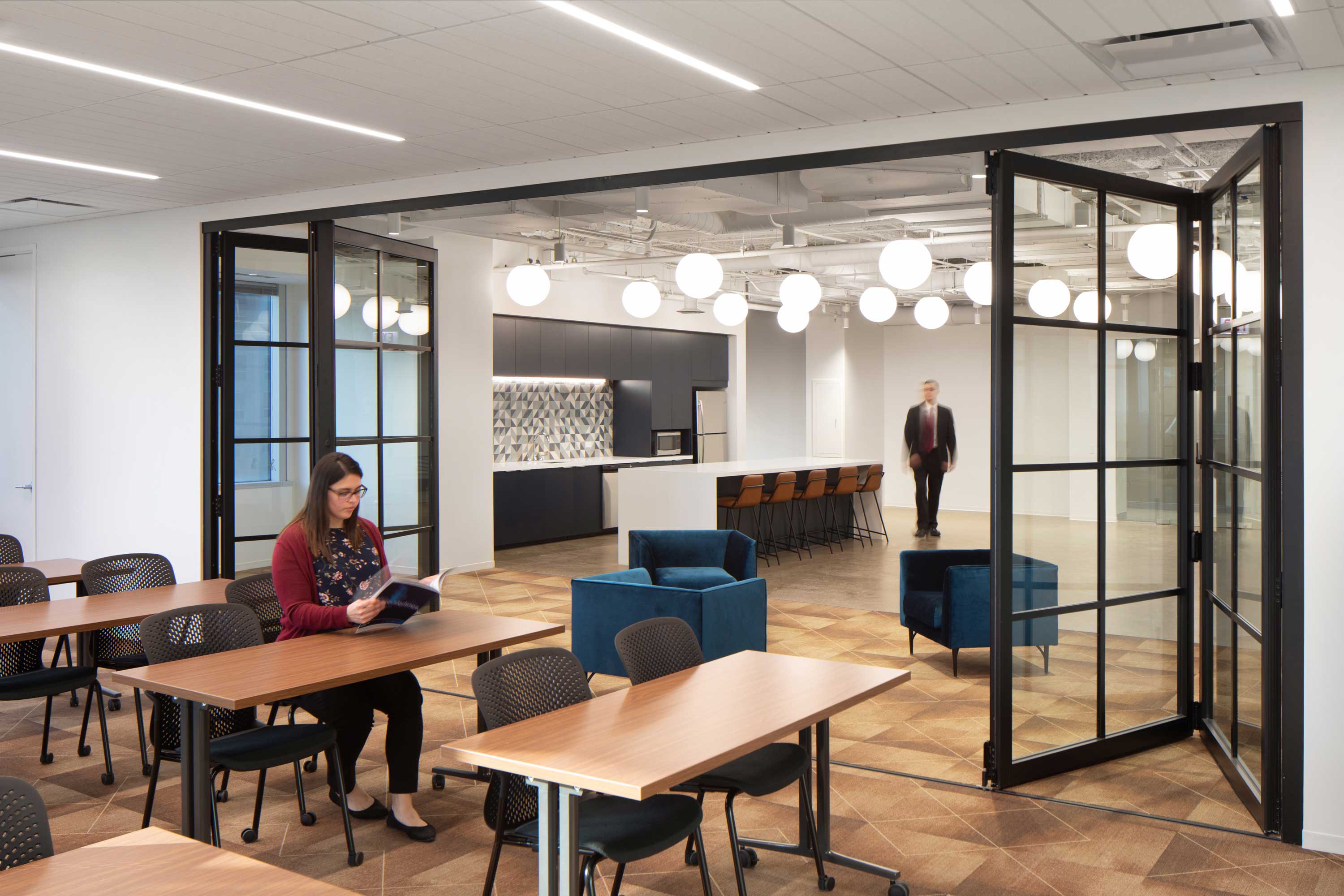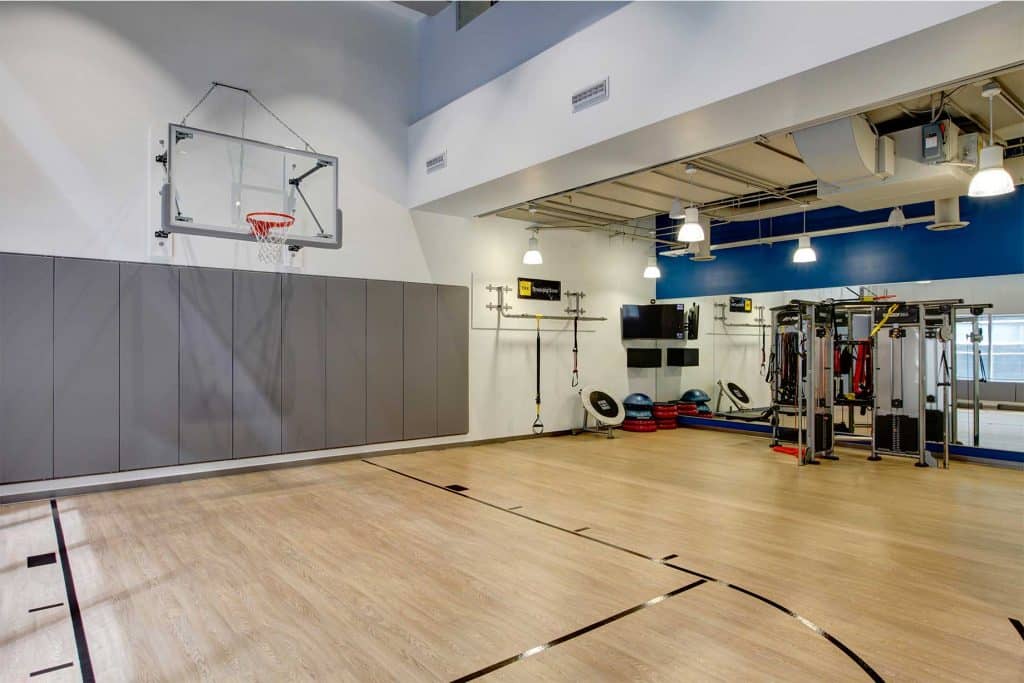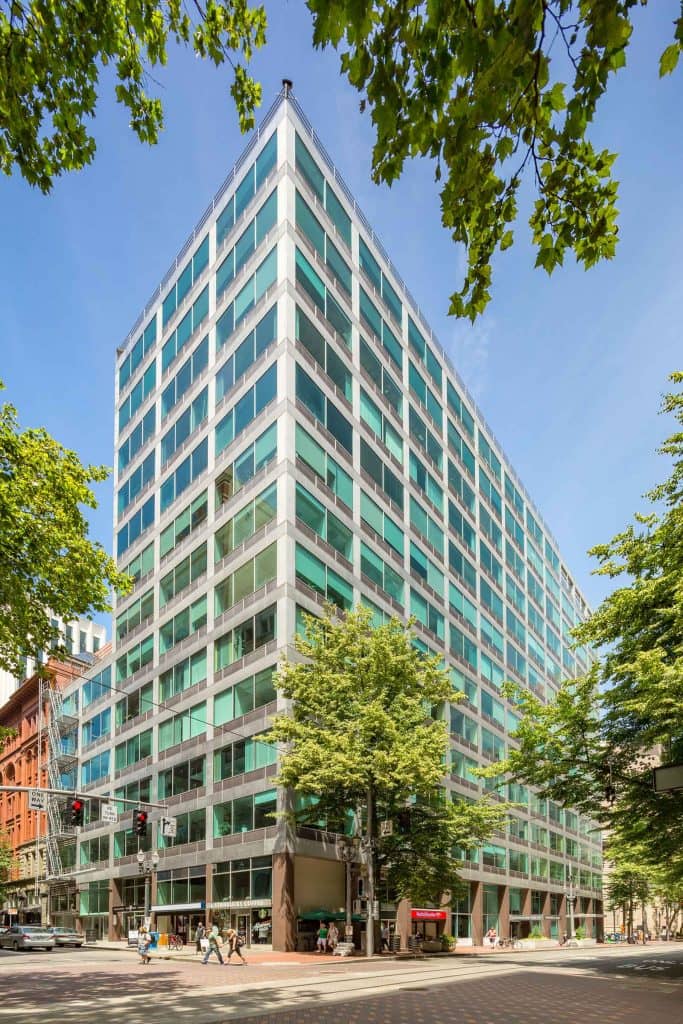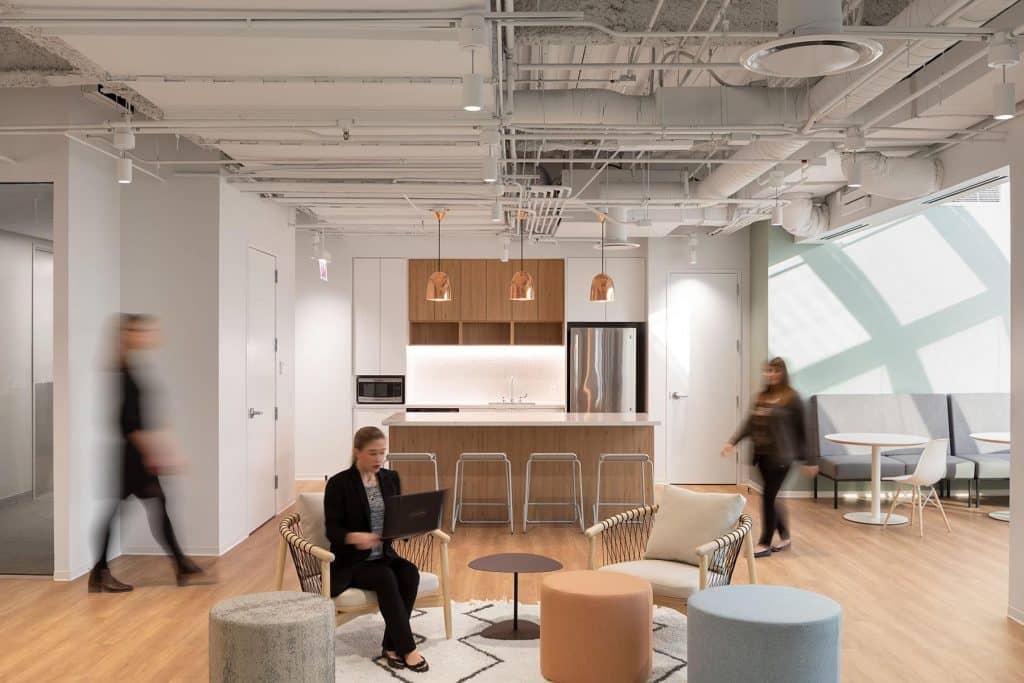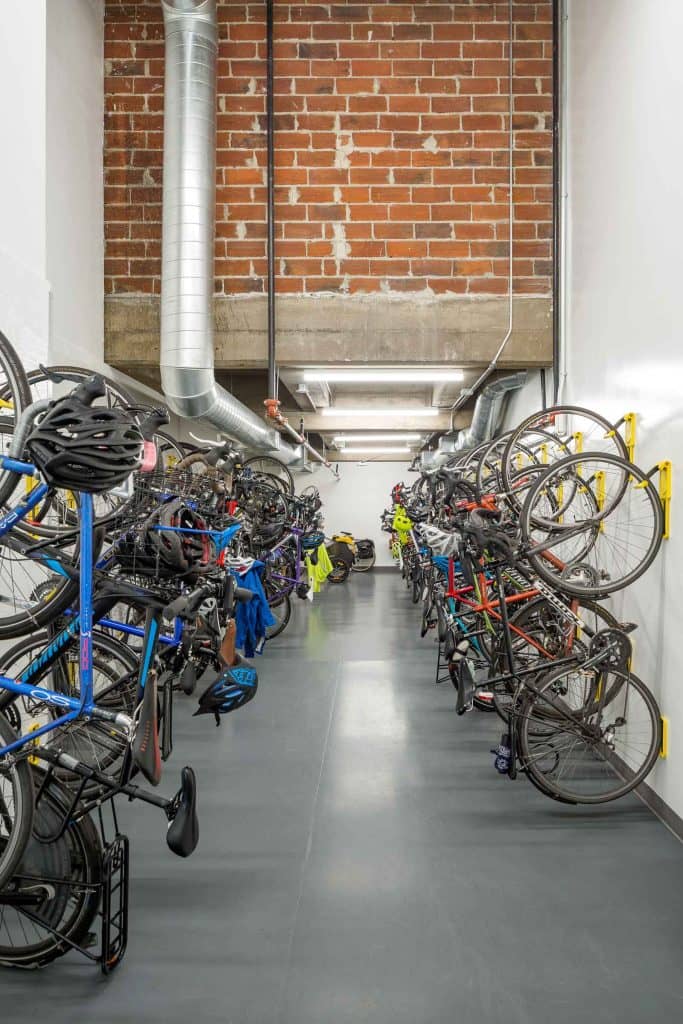Premier Office Magazine: What are some of the key trends that are affecting the leasing of urban-centered office space?
Schreiber: We really saw in 2012 a change in the focus and the demand for quality tenants throughout the country. There became a heightened sensitivity to employees. We went through a capital crisis from 2008 to 2010 and beginning in 2010, job growth started to pick back up. With this economic acceleration, tenants began to expand. A key factor in those decisions was to identify locations where they could attract and retain employees. Tenants were moving from B buildings to A buildings in what we would call an employer’s “flight to quality.” Once they got into these higher-quality buildings, they realized it was a great presentation to their employees and their clients. That sensitivity has continued to flourish and is a key driver in the demand we see today for quality office space at the right locations.
POM: When you acquire property, what goes into selecting the right location?
Schreiber: We are looking at properties that will be an ideal location for a tenant’s business to flourish. There may be an opportunity for a new tenant to take less space in one of our buildings than in a lower-quality property with more available space — but we offer design and efficiency characteristics that make their space more functional, and we strategically invest in amenities and other common area improvements to elevate the status of the building so the tenants can be successful. The right location is critical, and it is a big factor for our tenants and their ability to attract talent and grow their businesses.
500 W Madison
POM: Are you buying in the suburbs or in urban locations?
Schreiber: Our buildings are generally downtown CBD locations. Before acquiring a property, we carefully examine how employees are getting to those buildings. What is their access from home? What is the parking like? What public transportation options are in the immediate vicinity of the building?
At our Accenture Tower property in Chicago, we have the train station right below our building, and so in winter when it’s snowing sideways in Chicago, a tenant never needs to leave the building. The train can get them there and we have all the amenities they need right in the building — they never have to go outside. We even have a basketball court in the building.
“
Proximity to successful universities is a big factor today, especially with tech-oriented tenants.
POM: What other factors play into a tenant’s decision about where to locate their business?
Schreiber: Proximity to successful universities is a big factor today, especially with tech-oriented tenants. We are keyed in on this and try to identify acquisitions with a quality talent pool that businesses can recruit from. For example, we have multiple assets in Austin, Charlotte, Raleigh, Portland, and Salt Lake City. These are all strong growth markets with great talent pools. Another thing we look for is strong multifamily development to support demand as well as great dining and entertainment amenities within walking distance of the properties we acquire.
POM: So, for a large company looking to relocate or expand its operations, the director of real estate for that company really has to be keyed in on a new set of drivers with respect to talent.
Schreiber: I would suggest that the HR director of these organizations is now a key voice in the location and space planning decisions. If you go back five years, if a company was going to expand into a market and take 20,000 square feet on one floor and maybe hire 80 employees, the CEO and the CFO and the director of real estate got together to discuss it. Now you have the CFO, CEO and director of HR. If they go into that location, they need to hire 50 or 80 employees at that location — so they need to identify a market where those employees are available. They need a market with a few hundred prospective employees. Now imagine if they need 900 employees. If they can’t hire those employees, they have a major problem — not only hiring, but retaining them. Retaining employees has become very competitive, so being in markets that have a strong talent pool is very important for many businesses today.
“
My confidence level in an existing building is extremely high. But if I buy on spec, tenants may not move in for four years…
POM: Your strategy over the years has primarily been to buy existing properties. Why is that?
Schreiber: KBS has been involved in some very successful development projects over the years, but it’s a smaller part of our activities. The reason for this is because the equity invested may not generate an appropriate return when you consider the risk that comes with a development. The question becomes “Am I happy to get little to no return as a development is being built, or is it better to get a stabilized return based on what I know today in a well-located and well-occupied asset that is already built?” My confidence level in an existing building is extremely high. But if I buy on spec, tenants may not move in for four years, so you have to forecast out four or five years and you really don’t know exactly what the market is going to be like at that location five years from now. As a leading real estate company, would I buy into a new development where I have to forecast a potential return? Or do I invest in something that’s fully completed? At KBS we like to minimize risk. As a buyer, I am more comfortable with a lower return and buying property and increasing the potential return through strategic improvements versus accepting the risk of developing a new building.
POM: How do you determine what amenities and improvements tenants are looking for?
Schreiber: Multiple ways. First, we hire the top tenant research firm in the country, and we survey every one of our tenants each year to find out what their needs are, what they like or don’t like about their space and the building or the level of on-site management service. The data we collect is beneficial in understanding not only our current tenants’ mindset, but also the types of needs new tenants will want. Another procedure would be if we were to buy a 10-story building, and we have a tenant that occupies two floors and their lease is up for renewal in two years. That tenant has a good idea if they are going to stay or go. If they are thinking about leaving, that’s a tenant we want to talk to. We would ask them why they feel they could find a better opportunity elsewhere. That interview is priceless.
POM: Does this information help you when it comes to attracting new tenants?
Schreiber: Absolutely. We have created “spec suite” programs at a number of our properties that are highly successful because of the information we collect from our current tenant base. These are not your traditional “white box” shell spaces. In a building like 500 West Madison with roughly 1.5 million square feet of leasable space, we may have three or four spec suites throughout the building. Not one of them is the same — they are each very unique. Some have garage door partitions or mesh metal curtains or lounge areas with mini kitchens — it’s really creative stuff. We have furnished these suites with modern amenities and modern designs and lighting. We have had a number of situations where a potential tenant is so excited with the design and configuration, they take the space as-is. Knowing what tenants want is a big part of our success.
“
We prefer multitenant properties for a number of reasons, not the least of which is managing risk for the investor.
POM: Why do you prefer to buy multitenant properties versus single-tenant buildings?
Schreiber: We prefer multitenant properties for a number of reasons, not the least of which is managing risk. If you go back 10 years, there were a number of fund sponsors focused on single-tenant buildings. A good example might be a single-tenant headquarter building that represented an $80 million investment with no new capital expenditures needed and no leasing risk. That sounds great, right? What people don’t realize is that if the lease is up in 10 years when you get into year 2022, that building may not be marketable for sale — unless there is a commitment from the tenant to extend that lease. If there is a risk they may move out, you might have to put in $50 to $100 per square foot to re-lease that building, and it may take you two years or longer to lease it up. So, from a risk standpoint, it is enormous. From a financing viewpoint, if you have a major lease that expires in six years, your financing is going to be more expensive — you have to reserve substantial cash for future capital expenditures. So, to sit back today and say, “I have a 15-year lease; it’s wonderful” — what’s really happening is that single-tenant building is declining in value every single year.
With multitenant properties in markets with strong demand, we have the opportunity to mitigate a lot of risk. We have ongoing expenses as leases expire. We may have as much as 8% to 14% of the leases expiring, but we generally have consistent demand from tenants who are negotiating extensions a year or two prior to expiration. It minimizes risk, and when you look at a 10-year investment strategy, it has potential to substantially increase the return.
POM: Why are common area amenities so important today?
Schreiber: For 10 years we have been adding great amenities into our buildings. Let’s take a conference room, for example. Tenants need conference rooms not only for small group or a board of directors’ meeting, but what if they need to host 40 clients? They can’t afford to take space in their suite of 4,000 square feet. We will take a floor or half a floor in the building, put in a very modern conference facility and we can allocate that cost across all tenants. Tenants can then reserve it with coffee and food and have this great high-tech conference facility for larger meetings — and they don’t have to build that extra space within their suites. We can save them a lot of money. We look for ways to do that for our tenants, and it really helps us when it comes to attracting new tenants who are concerned about efficient use of space.
POM: What are some of the unique amenities you’ve put in your buildings?
Schreiber: We own the historic Meier & Frank Building in downtown Portland. It has a great health facility in the building that is used constantly. Tenants are in there using a punching bag or Peloton bikes and the latest exercise equipment. And of course, we have showers and lockers. Portland is a big bicycle city, and we have another building there, The Commonwealth Building, where we put in 200 bike racks and heated lockers for their jackets on those rainy Portland days — the tenants love it. This space was previously considered dead space in the building, but we turned it into one of the best amenities for our tenants, almost all of whom have employees who love to bike to work. It makes them really proud of where they work. The way I see it, we have an obligation to every tenant to make that building the best location for them to be successful.
POM: Are you seeing tenants today signing short-term or longer-term leases?
Schreiber: We have tenants today signing 15-year leases when in the past it was three to five years. Tenants are focused on retention of employees. There are not enough buildings in these selected markets, and they are securing their home for the long term. What we are also seeing are tenants negotiating for a right of first refusal for adjacent space in the building to accommodate future growth. It’s a great time to be an owner of existing multitenant office property in the right locations.

